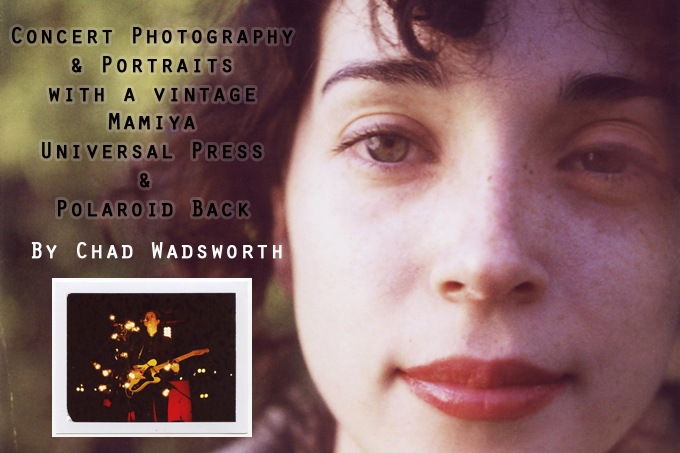
User Report: Concert Photography & Portraits with a vintage Mamiya Universal Press and Polaroid Back by Chad Wadsworth
Hello Steve Huff Photo readers! Steve was kind enough to let me share with you some concert photography and artist portraits that I’ve taken over the last few years with Polaroid land cameras and an old Mamiya Universal Press with a Polaroid back. It seems like we are all constantly searching for the next new piece of digital gear, whether it be the M10, X-Pro 1, OMD or NEX-7. I’m guilty of buying a ticket to this carousel and have been through my share of m4/3 and APS-C compacts as they certainly do have their important place in our daily photography. That said, in retrospect, the work that is often most satisfying to me personally has been the “lo-fi” analog photos captured with vintage gear.
As a concert and editorial photographer, my weapon of choice is a DSLR. It offers the perfect combination of rugged build (I recently had to use the body of my 5D to brace myself against the stage as the crowd surged forward), speed of focus, access to excellent optics and a comfortable user interface. But as most my contemporaries use the same equipment, it can be challenging to craft a signature to your work outside of composition and post processing. Vintage gear or larger format cameras can bring new looks to your work and are a ton of fun to use.
I won’t take up much more of your reading time other than to tell you a little more about the gear and techniques used.
In this group of shots I am using my trusty Mamiya Universal Press (a medium format rangefinder) with a broken shutter trigger so I have to manually hit the shutter lever on the lens. This particular concert was well-lit but the film was slow – Fuji FP-100 and my shutter speed was around 1/30 at f/2.8 with a Sekor 100mm lens. I basically zone focused and tried to stay steady during an exciting set by one of my favorite bands – Spoon. I also had some fun with a double exposure shot from the stage – not sure if it works completely but I like it fine.
–
The same camera and Polaroid back combination was used here for an album artwork shoot. This one was shot at sunset on a farm in the Texas Hill Country.
–
The Mamiya / Sekor 100mm also makes for a great lo-fi portrait lens with nice swirly bokeh and strong vignetting. Here are some artist snapshots taken at the Fun Fun Fun Fest in Austin, TX. The artists are: Bounce/Hip-Hop musician Big Freedia, John Dwyer from the San Francisco band, Thee Oh Sees and the truly remarkable Merrill Garbus of the music project tUnE-yArDs
–
And finally, here are some photos from an ongoing portrait series using an old Polaroid 450 land camera with portrait lens attachment. Some of these were shot on the real deal – Polaroid 669, others with Fuji FP-100. The camera is positioned about 10 inches from the subject’s nose which can result in an intense emotive quality as they stare into the camera at close range. Artists are: the lovely Annie Clark, also known as St. Vincent, Matt Berninger of The National, Matt Shaw of the now defunct band, Hymns and the beautiful and talented Shara Worden, also known as My Brightest Diamond. Thanks for looking and thanks again to Steve!

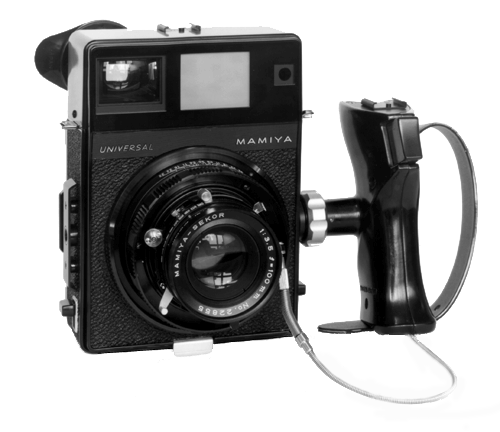
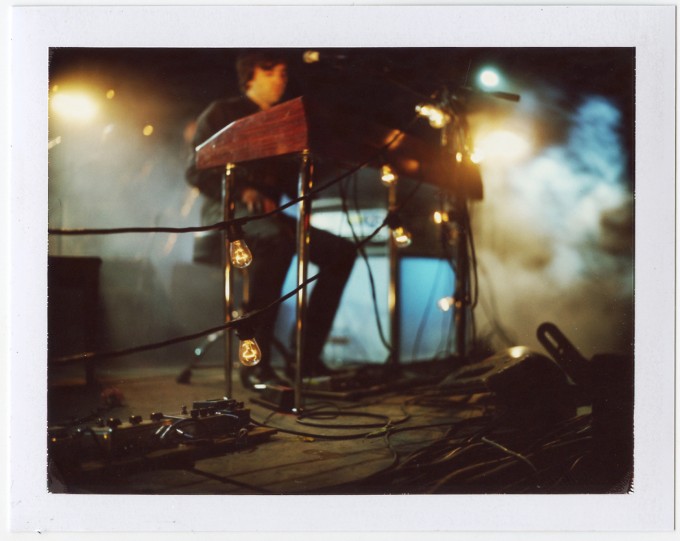
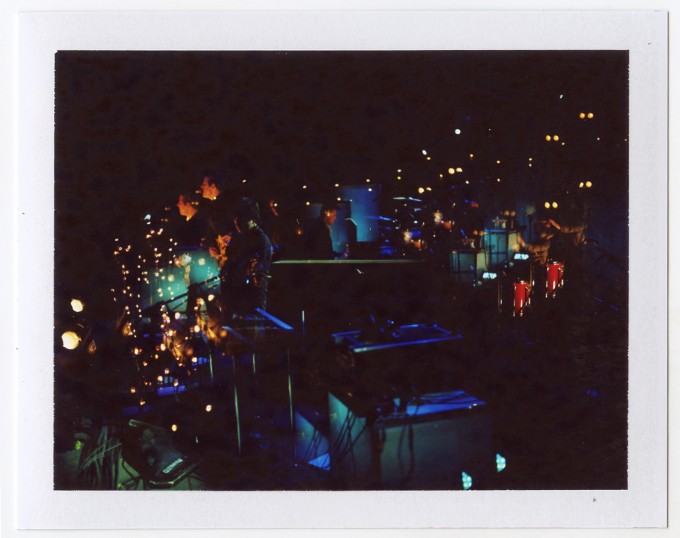
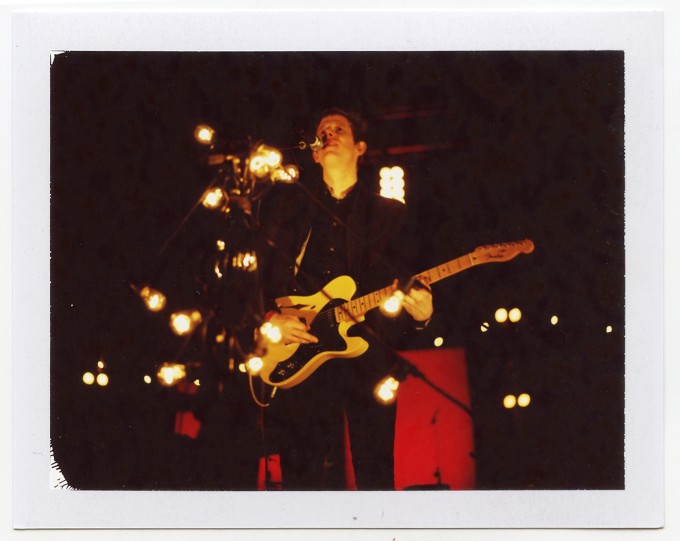
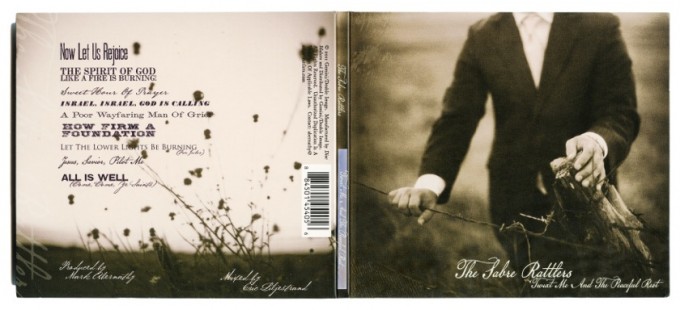
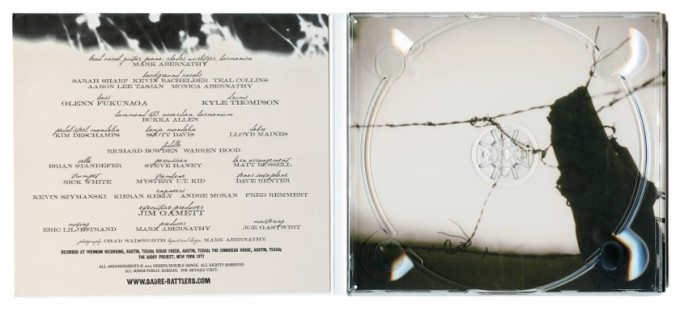
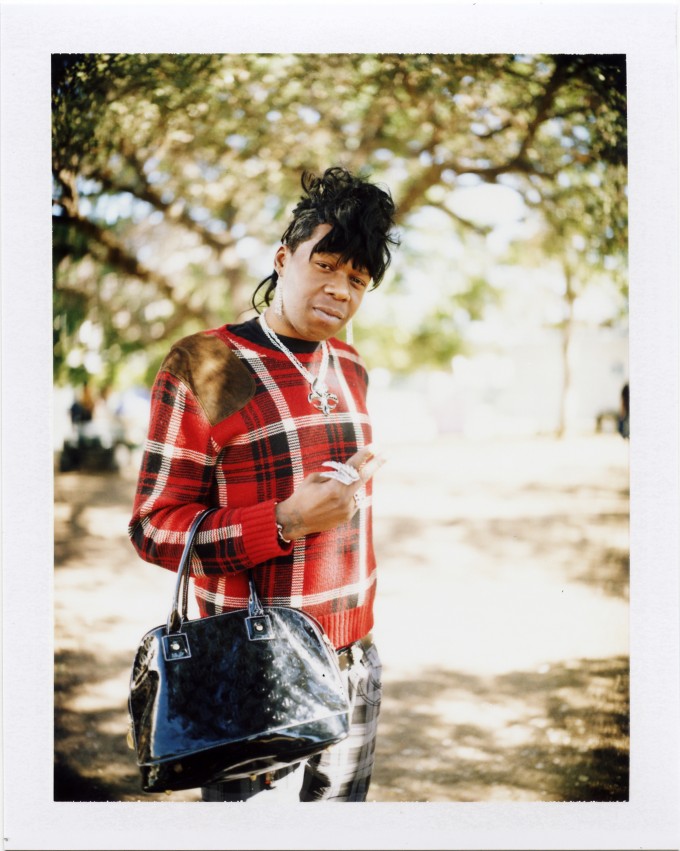
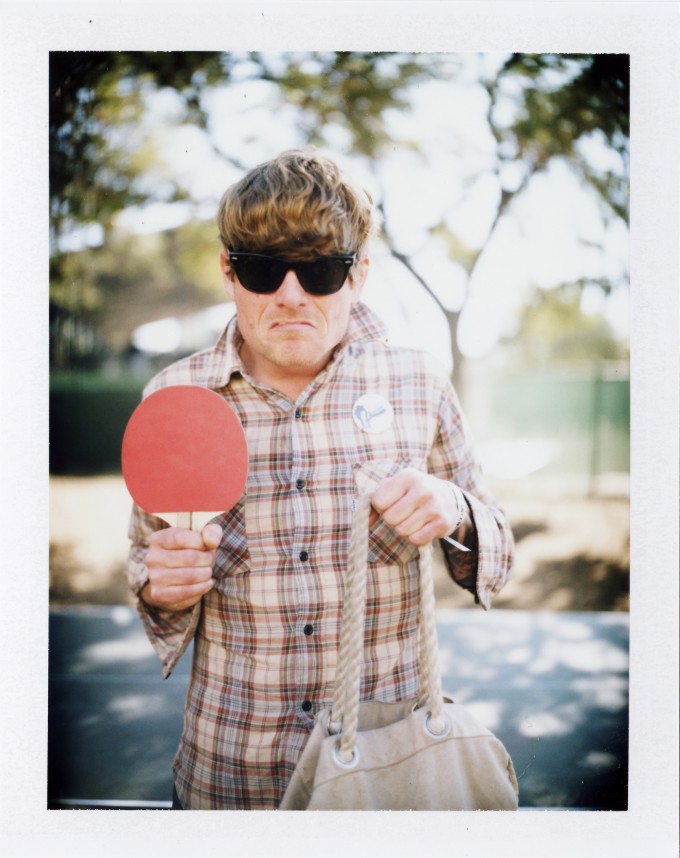
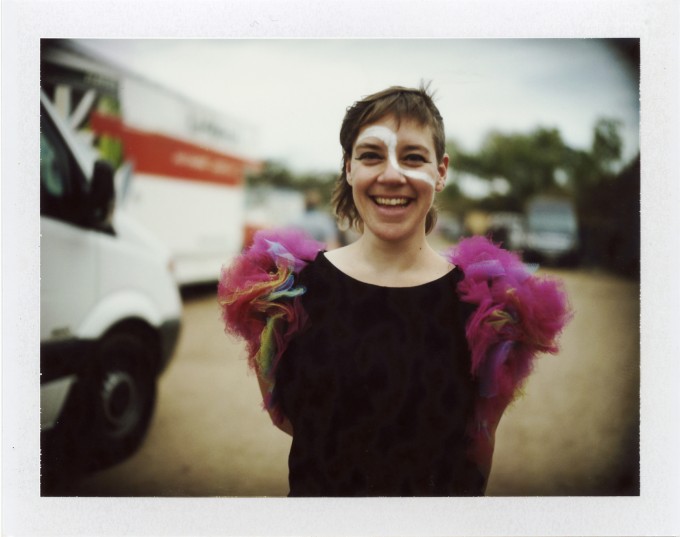
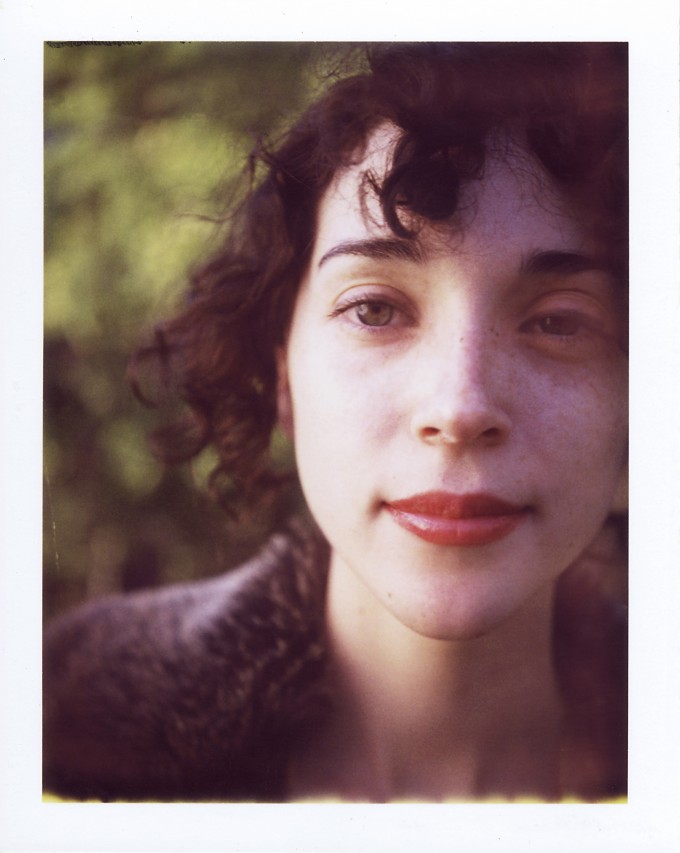
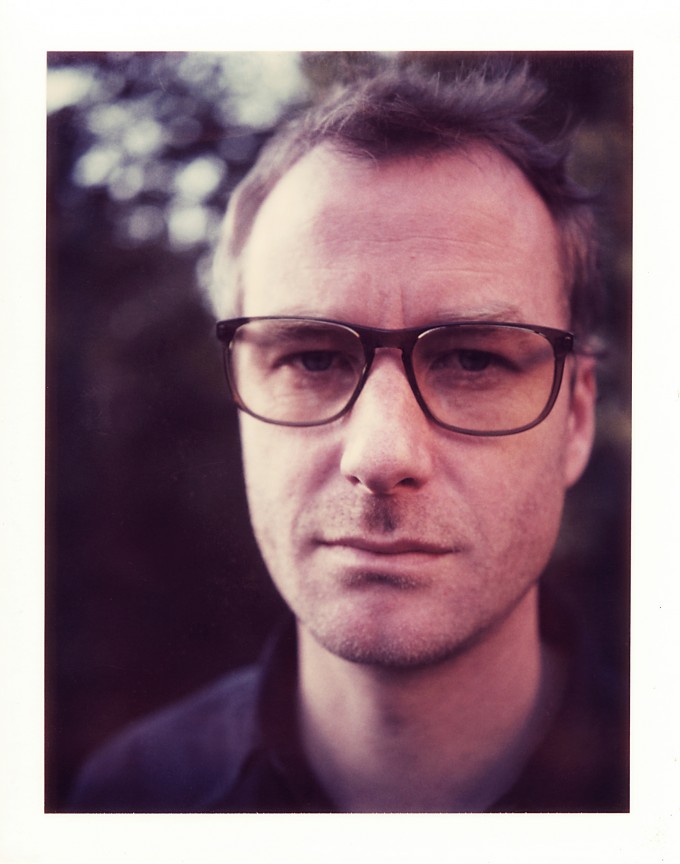
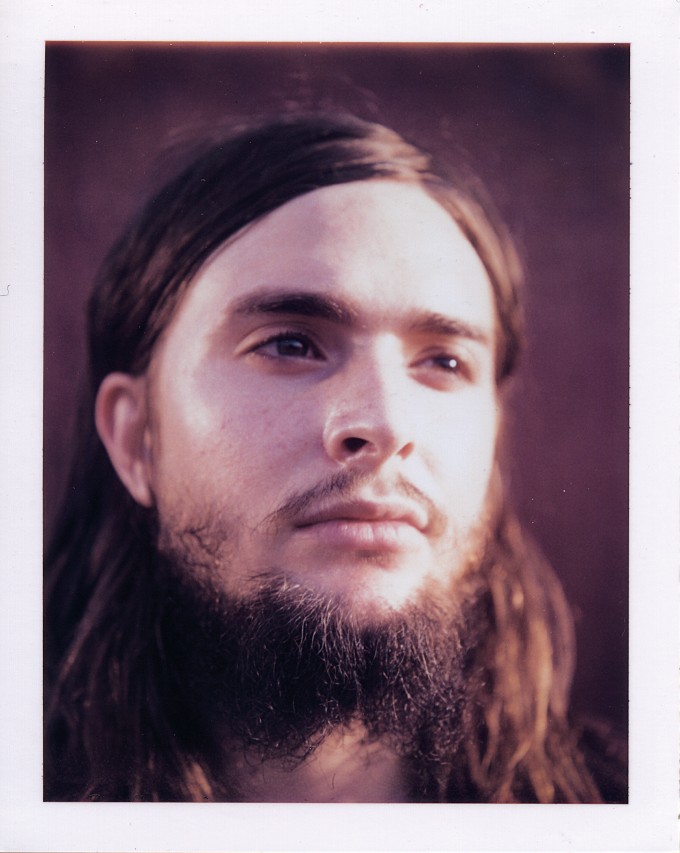
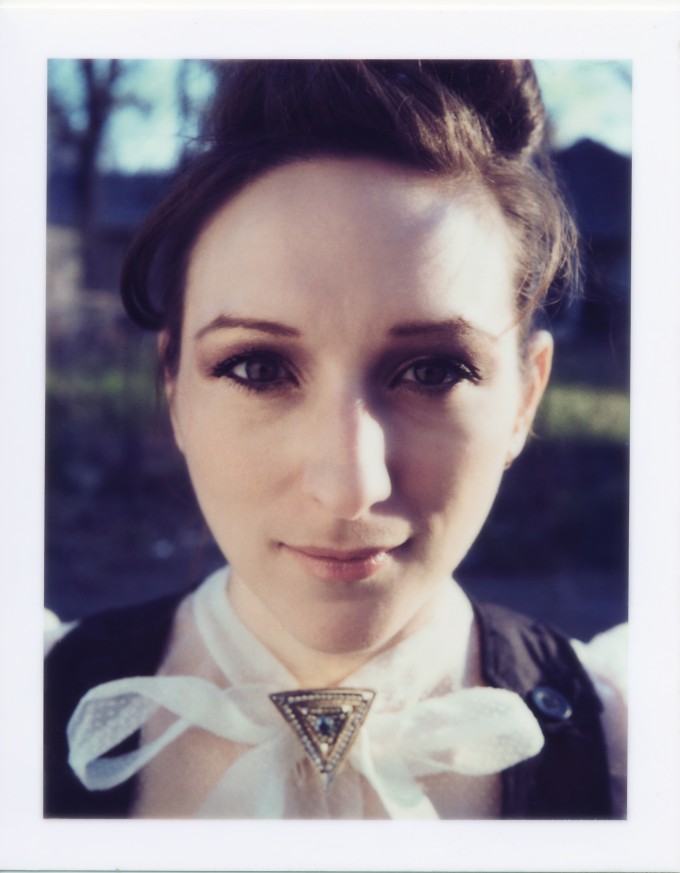



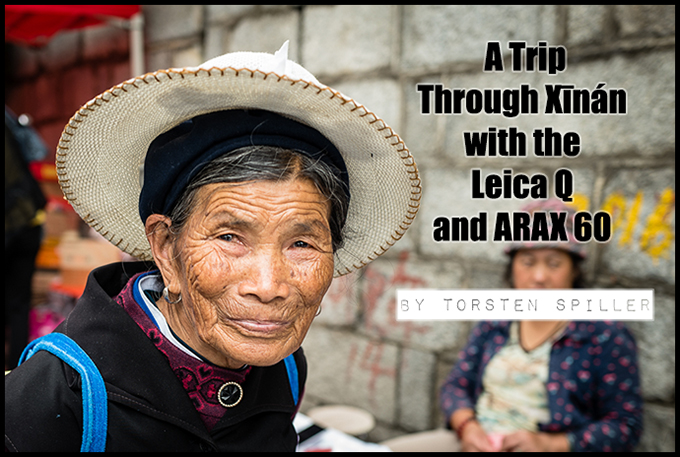
That was inspiring AND helpful
Great pictures! When you say portrait attachment it sounds like you mean the close-up attachment. The portrait attachments focus from 19-42″ and the close-up attachments focus down to 9″.
any data from anybody?
Great photos but, may I ask, why call it vintage? I mean, if you really say vintage I’m thinking screw mount Leica… Anything past the late 60s in my head, while they’re the grandfathers of the modern design, are still modern. No harm man(:
No worries Brian. Anything older than me is defacto “vintage” 🙂
Hey Dann & Brandon,
Thank you for the insight, you both cleared up the confusion I had between the lenses. Brandon you are probably right about the switch as I will take an extra stop any day of the week. I have my eye on a 75 right now as well as a 65 but the condition of that one doesn’t seem so good. I’m sure I will slowly build up all the viewfinders and such over time but I’m definitely interested in the ground glass especially.You get to use a hood with that one right? I just checked out your website, very cool and inspiring work…hope you don’t mind if I email yo with a question or two once I get the camera haha.
John,
You are free to email me anytime. You are correct, the glass comes with a hood albeit a smaller one. From what I hear the 75mm is nice and gives a nice wide image on the instant film. I use the 65mm and am looking at getting a 50mm and both of these provide a wide image on the film as well with a little darkening in the corners. If I were to line up the best lenses for this camera it would be 100/2.8, 50/6.3, 75/5.6, 65/6.3 and 250/5. Oh course this is an opinion. 🙂 Also, if you are of the mechanical and creative type you can adapt other backs to this camera as well. For instance the CB70 back will let you shoot integral film (Impossible Project) and one plus of the 75mm is that it almost covers 4×5, so with a 550 holder you can use FP-100c45. You have SO many options with this camera. Anyways, I rant over my love for the MUP! Thanks for the comments. My site needs some love from me. Email anytime.
Brandon
Thanks for your opinion on lenses and the other modifications, I have to say this system can be a bit confusing with all the backs and mounts available. I have two Polaroid backs for my RB that I thought would fit on the Press but it turns out you need a P adapter/the ground glass attachment for those to fit. So instead I bought the one Polaroid back I found on ebay that will fit directly in the press (1/3 of the price of the ground glass). Hope that was the correct route. I’m definitely interested in the CB40 (assuming Impossible film doesn’t fit in Polaroid Land Back?).
Yes, the Impossible film won’t fit (well, it will fit but not the type of fit you want in photography). The pack film is larger and is ejected by pulling two tabs, first tab pulls the film tab out and second tab pulls the actual film out which in turn pulls out the next tab. Also, and I can’t stress this enough because ebay listings are often incorrect, make sure when you buy lenses and backs that you get them for the Mamiya Universal and NOT the Polaroid 600. The feet are different and will not swap between the two. Same for lenses as mounts are different. These are the backs for polaroid. Top is of the newer variety, bottom is older. The older pola backs look like the back of a Land Camera.
http://www.flickr.com/photos/zokyo/5414092128/
http://www.flickr.com/photos/zokyo/5413480777/
Chad simply lovely and enchanting portraits. Kudos my friend.
Replied in the wrong place, that comment was meant for you Brandon.
Universal Press (the latest model I believe) with a Mamiya Sekor 100mm F3.5 lens. Except for a couple paint chips the camera looks pristine. I see the author of this post ( and many others on Flickr ) have a 100mm 2.8 Sekor and I wondering where in the succession it was changed to a 3.5 or vice vera.
The first 100mm f3.5 where Tessar design and those won’t be found much with f2.8, for the Mamiya Press and the Super 23 you had the 100mm f3.5 that could collapse to use with bellows.
So i think they made this f2.8 version came later for the body’s without rear bellows!
I can say with 100% certainty that you will want to jump to the 100/2.8 as soon as funds allow. I started with the 100/3.5 and while it’s a decent performer the 2.8 leaps ahead of it. I don’t really shoot tele with it so I am working on the wides. People will tell you that only the 75mm, 127mm and 150mm will work with instant but use them all. A little vignetting never hurt anyone and the 100 does wonderfully with it. The ground glass back will help with composition on these “unsupported” lenses.
Also, I don’t think that the 2.8 was a successor, but more like an upgrade option if you wanted a faster 100mm lens… The 100/3.5 can be recessed for use with the Mamiya 23, I believe the 90mm (some variations) also have this feature. The 2.8 doesn’t do this, but that feature doesn’t really help me on the universal anyways.
As they say when the concert ends -Encore Encore !
I just wanted to add that you inspired me to purchase one for myself just now. I was saving some money to see if I wanted a OM 5 or Xpro but after seeing some of the images you and others took with this camera I decided to go completely in the other direction. Thanks again for your inspiration!
What combo did you end up with?
uh oh, you are in it thick now. Congrats!
Thanks Chad
I actually have an RB but it’s pretty gritty which in turn leads to gritty images when what I’m looking for from a MF camera is sharp,smooth exposures. Coupled with the fact that it’s a tank I like the fact that the press camera seems manageable to carry and shoot with on the fly. Can’t wait to get my hands on it and thanks again for the inspiration.
Incredible work, thank you for sharing. Long Live Mamiyas!
Beautiful photography. And i dig some of these indie artists.
Love it! this is art!
Chad,
You’re doing amazing and wonderful things with that vintage gear. I feel so inspired!
Thank you for sharing — and please keep it up!
Susan
Awesome!
Mamiya makes great lenses ! i love my M7 but the Mamiya press is way big to heavy !
Greg
simply love the style of the photo! really retro!
I love this article, and it mirrors what I have experienced as well. Digital has it’s place and use, but there is nothing like shooting film! I’m primarily shooting with a mamiya c330s now and it’s what I shoot with 90% of the time. I also love polaroid and picked up a beautiful 250 about a year ago that gets regular use. Your photo’s are great and I especially like the portrait work, great shot of Shara Worden! Thank you for your post!
Incredible soulful work, that is Photography!
Absolutely STUNNING work, beautiful look, feel and craft, love and thought gone into these.
People can get a quick fix with their Nikon D800’s to their ‘Instagrammes and Hipstamatics” and other digital stuff, but it cannot touch the look, feel and reality of real Film, and stuff lovingly made in the hands of an artist such as yourself.!
Love it!
In many ways I find this real photography… what ever that means. Wonderful images.
+1
if one can photograph almost any camera will do. But if one can’t he will get poor results even from the best camera..
Chad Wadsworth can photograph !
🙂
Love the portraits.
Been looking at mamiyas 645 recently myself. Not enough spare cash though bummer.
Hi Chad,
I have not much experience with film and am a digital guy, mostly not impressed by film.
But your portraits are great, sp. Annie Clark. You use the special character of the analog gear and the film best.
Many people think vintage and blurred is a quality itself but this always reminds me of my film experience in the 70s, it always looked as something went wrong.
Not so with your photos, its a special way to capture the expressions on the faces.
The concert photos – I like the digital ones on your web page better.
Best regards
Heiner
What a great and refreshing contribution. Photos showing art. No pixel peeping. Thanks for sharing.
Hi Chad, have to agree with the others, that first portrait is a bit special. What a lovely article though, very inspirational and interesting.
Thanks,
Colin
Hey Chad, congrats, these are really amazing pictures ! I had the chance to see a concert of Merrill Garbus and her band here in Brussels a couple of months ago. Wow, she was awesome! Best concert in years!
Thanks for sharing!
All photos are amazing but there is something special about the first shot and the second to last portrait is very evocative. Such a nice contrast to the usual “I have f/.95 lens and will blur everything” posts
There is some magic in every single shot I see here! Very refreshing and pleasant for my eyes! Thanks for sharing!
!!!
Great, just great images.
Michiel
Quick question on the portraits.. Have you thought of using the ground glass back and rear extensions for close up portraits? I’m guessing you’d get similar results but with more DOF from the 100/2.8? I’m sure there is a cost variance between the Land Camera portrait kit and the Mamiya accessories.
Hi Brandon,
Good question. I’m more interested in eventually getting one of the manual exposure Polaroids – 180, 185, 190, 195, Fuji FP-1 or the Konica. That combination of small size, control and optics is insane. Shooting with the 450 is like using a fully automatic exposure point and shoot so I need to carefully control light, where I would have more flexibility with the manual exposure Polaroids.I’m also partial to the DOF results I’m getting with the Polaroid combination.
And while I am here – need to run and catch a plane – thank you to all the other posters for their kind words. I’m glad some of you enjoy the photos.
Chad
Hi Chad,
Thanks for the response. I wish my 195 didn’t have bad bellows or I would have thought to use it for this purpose. And let me reiterate that seeing your work is inspiring because I often feel alone out there with my Fuji instant and Universal Press. 🙂 Keep up the awesome work and do convince Steve to let you post more on here.
Cheers,
Brandon
Wow. Wonderfull stuff! Real classic look. There are still more than enough reasons for film.
B
Thanks for sharing! I especially like the portraits.
I love the penultimate shot. Wonderful portrait. This is the reason why medium-format still has a place in photography.
I have always wanted a Mamiya press camera. Shopped for them on Ebay, but never bought one. Pictures are wonderful.
Wow, these are incredible. Like someone said above, these are very refreshing indeed, great work!
That’s the vintage, soulful look I aspire to create, even though I’ll have to use PP to get it with my digital gear (or as close to it as possible). Even THAT eludes me thus far, but I’m just a beginner with a dream.
Thanks for the great inspiration!
Jeffrey
Great post. I always love to see users recognized for shooting with film, and this camera is no slacker. I personally own the exact combo mentioned and it worth shooting just from the reactions alone when you peel apart that first image. It’s also true that in this digital age it’s very hard to separate yourself since everyone tends to over-pshop their images. Very seldom is an image that you see the image that was taken. These images are WYSIWYG and the results can vary which makes shooting even more interesting. I’m sure FP-3000B would have made for some nice results as well, if you’re into B/W concert photography. Another awesome fact to compliment this setup is negative reclamation. Each one of these images while instant do have the option of reclaiming the large negative which can be scanned in and tweaked, if that’s your style.
Chad is a pretty outstanding photographer. Last time we traded some messages was regarding his use of the X100 but the love he still has for other cameras like the Ricoh GR21, T4, etc!!
Wonderful work Chad!! The Mamiya press is a pretty awesome camera to use, but next time try the FP-3000B and I bet you’ll be amazed!!! 😀
Thanks so much Carlos, I would should have had some FP-3000B with me for that Spoon set but my local camera shop was out. I have indeed shot it before and it is awesome.
Cool portraits and concert images Thanks for sharing
Refreshing and awesome, thanks for sharing your work with us!
Great stuff…beautiful portraits especially, as well as the CD liner photos. These are intimate, and immediate. The one of Annie Clark is incredible. Thanks for sharing, and for reminding us that photography is actually about craft and your mind’s eye, and not about a consumer electronics race….that by intent and choice you’ve sought out a tool that enables you to fulfil that vision, and that you also get enjoyment from using it – regardless of other options. People question why I still shoot black and white film, when there are plugins that can ‘create the same look’ for the RAW files in my M9 (which I also love). I do it simply because it’s creative and satisfying. Same as how a guitar player sometimes switches instruments to get the sound in his/her head. If people need an explanation of why you use this vintage Mamiya, as opposed to a hipstamatic app, they just don’t understand.
I love the gear reviews on this site, but we need way more of this kind of quality, richness and diversity. Thanks again.
I agree! Nothing feeds my desire to shoot film more than seeing the success of others with these tools of the past. I love seeing film being kept alive and used for the purposes in which it was intended.
I like the portraits also very much
Beautiful work. Love the portraits!